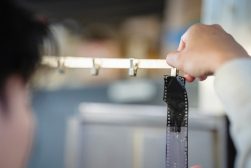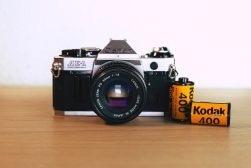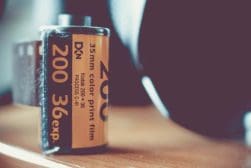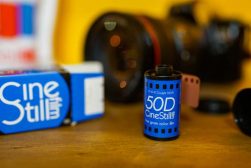
What Is a B-roll: A Short Guide
Discover the essentials of B-roll in filmmaking with our concise guide, detailing its importance in enhancing storytelling and visual interest.
Even if you’re new to photography and filmmaking, you’ve probably heard about B-roll. This is an old term that still circulates in the film industry.
Essentially, it refers to the additional or supplemental footage that was fused with the main footage (the A-roll) back in the day.
It revolves around the primary action’s environment, not the action itself.
Yet, how can this help you today, and why is it still relevant?
Well, today, I’ll share with you the significance of a B-roll in modern film, its various types, and a few common questions. Let’s begin.
Why You Need a B-roll
While we no longer use different tapes to record, the idea behind having a B-roll was never about the physical tape itself, but the concept of alternative footage.
To illustrate, you need a B-roll footage to help you with:
1. Enhanced Storytelling
There are times when you need more than just action and narrative to get the message across to the viewers.
You need depth and context, all of which a B-roll can help you with as it completes the story without boring the audience.
2. Adding Emotional Impact
When someone is talking about being sad and lonely, what comes to your mind?
You probably imagine them sitting alone – the world outside is bustling with life, but the room is dark and silent.
That’s a B-roll video for you! The small glimpses in movies of the rainy sky, the loud traffic, and the trees swaying in the wind all add an emotional bubble that covers the final shot.
3. Covering Edits
Finally, one of the most important aspects of having a B-roll is covering up edits and cuts with the additional footage.
When moving from scene to scene, making a major jump without a transition can be jarring to the viewer.
That’s why having a couple of shots in between can maintain the flow of the video without any abrupt changes.
- Have you mastered these 7 essential camera movements?
Types of B-roll Footage
Now that you know why having secondary footage, a B-roll, is crucial in addition to your primary footage, it’s time to look at some of the most popular types.
1. Ambient Shots
When filming anything, you’ll need to capture the environment of the main action.
For example, when shooting a documentary film about a historical place, you’ll need atmospheric shots that include the city, quiet alleys, and skyline views, offering a sense of place and atmosphere.
2. Cutaways
This form of B-roll is the one you go to when you want to cut away from the main event in the scene to another detail or related element.
For example, in a wedding scene, a cutaway shot could be a shot of the guests dancing or a close-up of the decorations.
3. Establishing Shots
Establishing B-roll footage is essentially the beginning of your primary footage, as well as the beginning of all scenes.
This is usually a variety of shots that “establish” the setting, location, or context. For instance, wide shots of the sky, buildings, and streets.
- Learn about 22 different types of camera shots and angles.
4. Inserts
Insert B-roll shots are vital in helping viewers see more within a scene.
Such shots are mainly close-ups of people or objects in a scene that add detail and emphasis to the main event.
5. Stock Footage
Stock footage is mostly pre-existing footage that you can use to support the main content.
This type of B-roll is particularly useful when you can’t shoot something due to location, time, or budget constraints.
- Read more: 15 Video Editing Tips & Tricks for Beginners
Frequently Asked Questions
What’s an example of a B-roll?
Suppose you’re filming a chef cooking a delicious recipe.
B-roll footage could be close-up shots of the chef dicing and cutting the ingredients, the ingredients alone, or scenes of the food cooking.
How long is a B-roll?
Ideally, your B-roll shouldn’t be so long that it becomes a mini-film. So, aim for about 30-60 seconds, depending on your project’s length.
Do you need a B-roll?
In short, yes. B-roll footage can really make a world of difference to your film by making it more engaging and enhancing the flow with smooth transitions.
The extra footage can also help set the mood and provide the viewer with additional context that improves the overall visual appeal.

Check out these 8 essential tools to help you succeed as a professional photographer.
Includes limited-time discounts.
As the Content Manager of Shotkit, India Mantle brings with her a lifelong love for photography that she developed during her childhood, watching her father document their family moments with his Nikon EM. In her free time, you find her enjoying the awe-inspiring natural beauty of her home, Northern Rivers, Australia.













